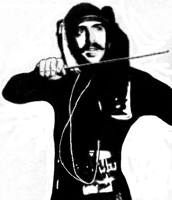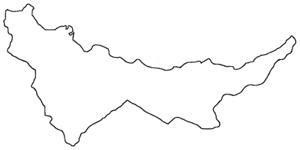
|
The Society of Folk Dance Historians (SFDH)
Dances of Pontos, Greece
[
Home |
About |
Encyclopedia | CLICK AN IMAGE TO ENLARGE |

|
 "TIK" is the most renowned of all the Pontic Dances.
"TIK" is the most renowned of all the Pontic Dances.
Tik means something that is very straight, like a straight beam ("thokari"). There are several Tiks that are most common:
- Tik (single)
- Double Tik
- Tik Sto Gonaton (with knee)
- Tik Mono (single)
- Tik Tromahto (trembling)
- Tik Gerondon
- Tik Ikokthespiniako
"OMAL" is another form of Pontic dance that is common.
- Omal Trapezoundos
- Omal Kerosoundos
- Omal Samsoundos
- Embropis
- Lahana
Omal is one of the most popular folk dances among the Pontic people. It is danced in every province. The characteristics of the dances are known by naming the province after each Omal, such as Tapesounda, Kerasounda, Samsounda, et cetera.
Other forms of Omal are:
- Omal – Dipat
- Omal – Lemona
- Omal – Garosarondon
- Omal – Samsoundeikon
These are the most common of all the Omals.
"KOTSARI" is another very popular dance, which is danced in Trapezounda. Kotsari is danced on the heels, and thus derives its name (kots means "heel"). This dance is danced by men and women.
"SERANITSA" is another very common dance, also known as "21." It is danced in Trapezounda originally, but its popularity has spread among all the other provinces of the Pontic people. It derives its name from a young princess many years ago, who as a young bride, was left a widow. "Sherra" in Pontic Greek or "Heirra" in Greek means widow; "Nitsa" is the diminutive, thus "Serenitsa" or "little widow."
"TRYGONA" is danced all over and is named after a woman's name. The story goes that she was married to a lazy husband, and she woud have to do the daily chores and bring the firewood home. The lyrics depict the lazy husband and his wife.
"LETCHINA" is danced in Trapezounda and Kromi.
"SARRIGOUS" means "blonde girl" and also is danced in Trapezounda.
"MILITSA" means "little apple" and is named after a woman's name.
"TA TITTARA" or "Double Kots" is danced on the heels and is from Trapezounda.
"KOTS" is always danced on the heels. Many Pontics had migrated to Russia at one time, and at that particular time the "Double Kots" was renamed "Ta Tittara"
"SERRA" is perhaps the most colorful and showy dance. It is also known as "Pyrrihios" from the ancient Greek word "Pyrr," meaning "fire," or sometimes known as a fire dance or a war dance. It is danced in preparation for a battle. First, in preparation, they would dance a Syrtos, accompanied with singing, whose lyrics would depict a battle. In times of celebration, the dance in later years would be performed at a wedding. Here the lyrics would change form the war theme to a mating theme. The Serra is only danced at special occasions, and most likely at a festival when the inspiration would rise and the fever would rise for the dancers to join hands in the Serra.
"MAHERIA," meaning "knives," is usually performed after Serra. It is a game-playing dance, where one would be caused to draw blood on another. Before drawing blood, they would toss the knives in the air and catch them with their teeth, then continue to dance with the knives in their mouths.
"GHEMOURA" is from Santa.
"MITERITSA" is danced by men and women as a kind of couple dance. The story reflects a young man's forlorn love for a young maiden.
"TO THYMISMA" is a dance of remembrance, and is always danced at weddings. It is danced by the groom, the bride, and the best man, and two young children, all holding lit candles. It is danced in Kromi, Trapezounda, and Kars.
"MOMOERIA," which in essence means "carnival," is danced during Lent. It is dance at New Year's Eve as the mimicking of the old year passing and bringing in the new.
"KOTCHANGEL" is a farewell dance, in a way of commemorating the greeting of departure.
"PIPILOMATENA - PATTOULAS" was named after a girl who had beautiful eyes that resembled lustrous beads.
DOCUMENTS
- Pontic Music and Dance, an article.
- Pontos, a region.
Reprinted from the 1981 University of the Pacific (Stockton) Folk Dance Camp syllabus.
This page © 2018 by Ron Houston.
Please do not copy any part of this page without including this copyright notice.
Please do not copy small portions out of context.
Please do not copy large portions without permission from Ron Houston.